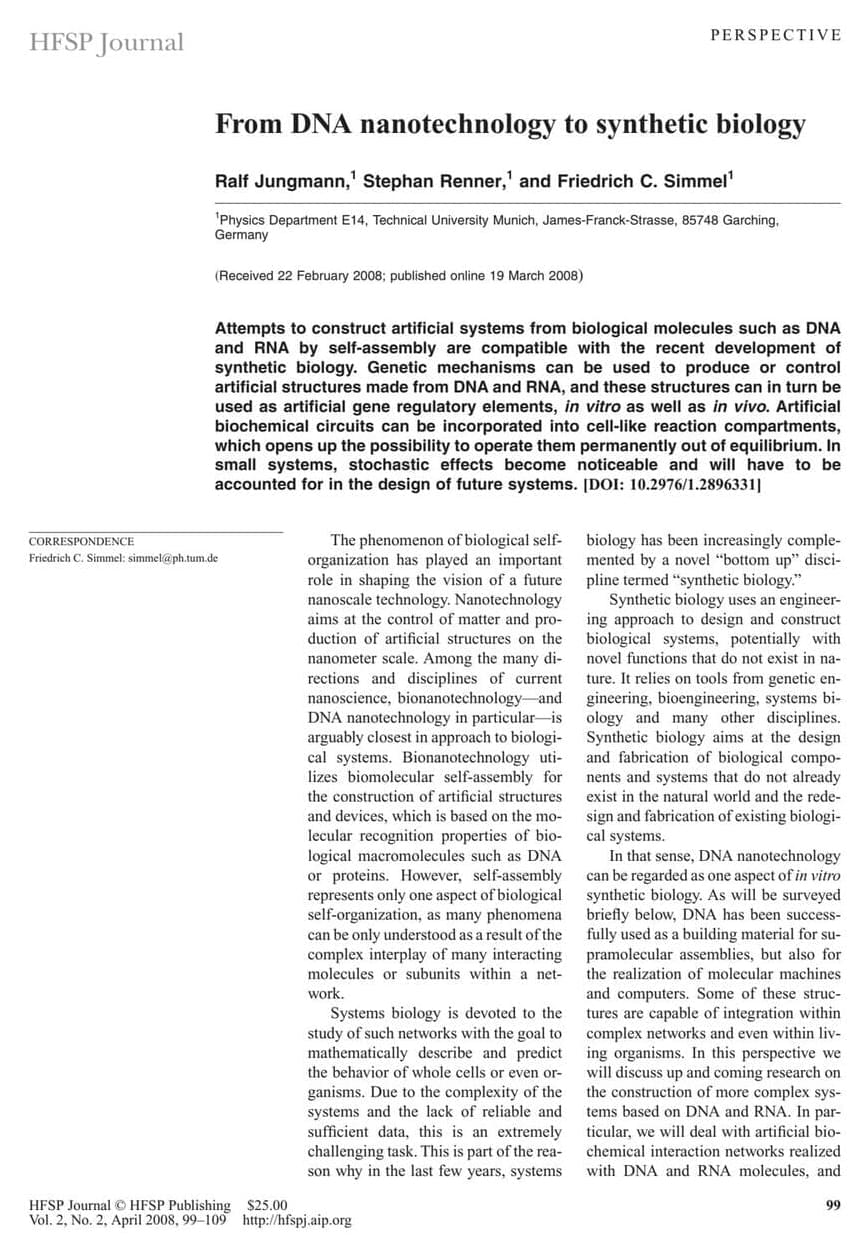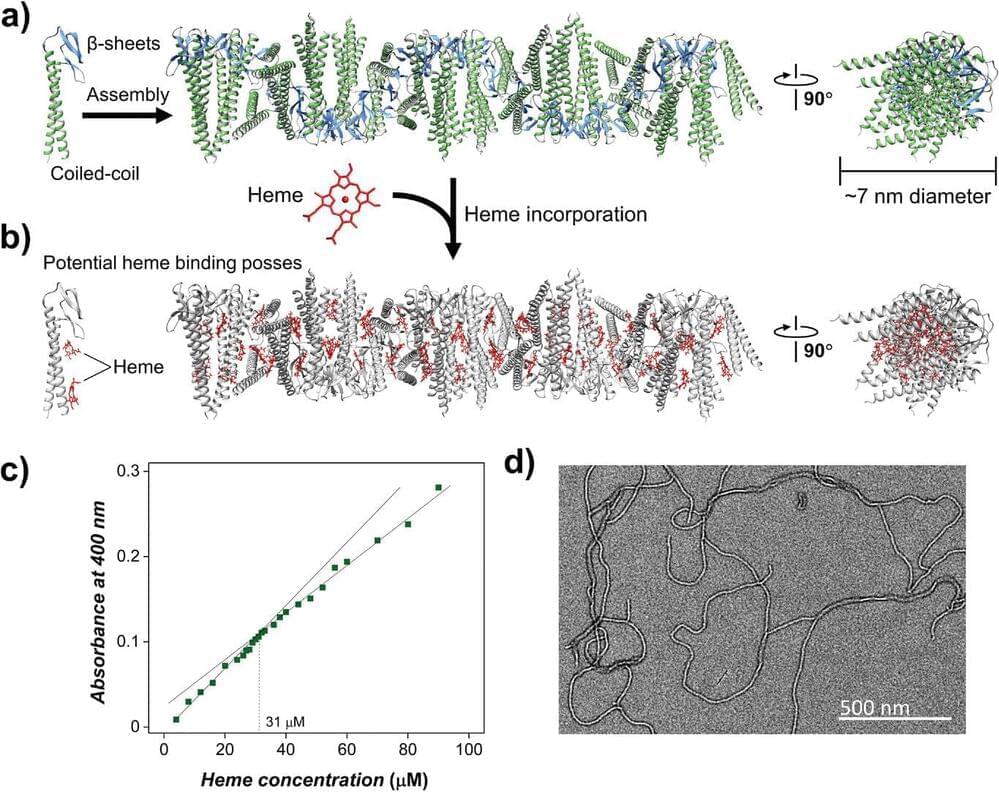Archive for the ‘nanotechnology’ category: Page 34
May 1, 2024
New research reveals terahertz waves’ impact on dynamics of nanoconfined water molecules
Posted by Genevieve Klien in category: nanotechnology
In a new discovery, researchers have revealed novel insights into the behavior of water molecules confined within nanostructures. Their study, published in Science Advances on April 24, delves into how terahertz (THz) waves influence the dynamics of water molecules confined in two-dimensional (2D) spaces within nanoresonators.
Apr 30, 2024
Discovery of uranium-contaminated soil purification material without secondary environmental pollution
Posted by Dan Breeden in categories: chemistry, economics, engineering, health, nanotechnology, nuclear energy, sustainability
Nuclear energy has long been regarded as a next-generation energy source, and major countries around the world are competing to secure cutting-edge technologies by leveraging the high economic efficiency and sustainability of nuclear power. However, uranium, which is essential for nuclear power generation, has serious implications for both soil ecosystems and human health.
Despite being a key radioactive material, uranium poses significant health risks due to its chemical toxicity to the kidneys, bones, and cells. As a result, both the U.S. Environmental Protection Agency and the World Health Organization recommend allowing and advocating for uranium concentrations in wastewater to be below 30 μg/L.
The Korea Institute of Civil Engineering and Building Technology (KICT) has conducted research on a nano-material-based adsorption process to efficiently remove uranium wastewater extracted from actual radioactive-contaminated soil. They have also proposed its applicability to prevent secondary environmental pollutions.
Apr 30, 2024
Bacteria ‘nanowires’ could help develop green electronics
Posted by Dan Breeden in categories: biotech/medical, engineering, nanotechnology
Engineered protein filaments originally produced by bacteria have been modified by scientists to conduct electricity. In a study published recently in the journal Small, researchers revealed that protein nanowires—which were modified by adding a single compound—can conduct electricity over short distances and harness energy from moisture in the air.
“Our findings open up possibilities for developing sustainable and environmentally friendly electrical components and devices, based on proteins,” says Dr. Lorenzo Travaglini, lead author on the paper. “These engineered nanowires could one day lead to innovations in energy harvesting, biomedical applications and environmental sensing.”
Developments in the interdisciplinary field that combine protein engineering and nanoelectronics also hold promise for developing cutting-edge technologies that bridge the gap between biological systems and electronic devices.
Apr 30, 2024
New, more biocompatible materials for bioelectronic applications
Posted by Dan Breeden in categories: biotech/medical, nanotechnology
Bioelectronics is a field of research in which biology and electronics converge. In medicine, for example, an external electric current is used to cure or monitor diseases of the nervous system, and also to monitor biomarkers in situ. Devices made of conductive materials are used for these applications.
The most widely used conductive polymer so far in energy and biomedical applications is PEDOT doped with PSS, known as PEDOT: PSS. Despite its exceptional properties, new conductive materials that can improve some of its limitations, such as biocompatibility, still need to be developed.
A study conducted by CIC biomaGUNE’s Biomolecular Nanotechnology group is proposing a mechanism for doping PEDOT using a robust engineered protein (PEDOT: Protein); the outcome is a hybrid material with ionic and electronic conductivity, which is quite similar to PEDOT: PSS in some cases. The paper is published in the journal Small.
Apr 30, 2024
Research combines DNA origami and photolithography to move one step closer to molecular computers
Posted by Dan Breeden in categories: computing, nanotechnology
Molecular computer components could represent a new IT revolution and help us create cheaper, faster, smaller, and more powerful computers. Yet researchers struggle to find ways to assemble them more reliably and efficiently.
To help achieve this, scientists from the Institute of Physics of the Czech Academy of Sciences investigated the possibilities of molecular machine self-assembly building upon solutions honed by natural evolution and using synergy with current chip manufacturing.
There is a limit to the miniaturization of current silicon-based computer chips. Molecular electronics, using single-molecule-sized switches and memories, could provide a revolution in the size, speed and capabilities of computers while cutting down on their increasing power consumption, but their mass production is a challenge. Large-scale, low-defect, accessible nanofabrication and assembly of the components remains elusive. Inspiration taken from living nature could change this status quo.
Apr 30, 2024
Scientists construct sophisticated synthetic system using self-replicating nanostructures
Posted by Genevieve Klien in categories: biotech/medical, nanotechnology
A research team led by the late Professor Liang Haojun from the Hefei National Laboratory for Physical Sciences at the Microscale of University of Science and Technology of China (USTC) has developed a facile enthalpy-mediated strategy to precisely control the replication and catalytic assembly of DNA-functionalized colloids in a time-dependent manner, facilitating the creation of large-scale ordered nanomaterials. The study was published in Angewandte Chemie International Edition.
The replication of information is a fundamental characteristic of nature, with nucleic acids playing a crucial role in biological systems. However, creating synthetic systems that can produce large-scale, three-dimensionally ordered nanomaterials using self-replicating nanostructures has remained a formidable challenge.
Existing artificial self-replicating systems often fall short in programmable assembly into sophisticated nanostructures, limiting their potential functions and applications.
Apr 29, 2024
Scientists learn from caterpillars how to create self-assembling capsules for drug delivery
Posted by Genevieve Klien in categories: biotech/medical, nanotechnology
Self-assembling molecules that spontaneously organize themselves to form complex structures are common in nature. For example, the tough outer layer of insects, called the cuticle, is rich in proteins that can self-assemble.
Self-assembly is a cost-effective, environmentally sustainable and quick way of manufacturing nanostructures with critical applications in various industries, ranging from therapeutics to self-replicating machines.
Harnessing the self-assembling abilities of proteins from the cuticles of Asian corn borer moth caterpillars (Ostrinia furnacalis), Nanyang Technological University, Singapore (NTU Singapore) scientists have created nanosized capsules that could be used to deliver drugs and messenger RNA (mRNA). mRNA is a molecule that instructs cells to produce proteins and has been used in COVID-19 vaccines.
Apr 29, 2024
Nanoscale anisotropy for biomedical applications
Posted by Shailesh Prasad in categories: biotech/medical, nanotechnology
Using nanoparticles featuring anisotropic characteristics is a promising approach to developing multifunctional platforms for drug delivery and theranostics. This Review discusses methods to generate anisotropy in nanosystems and strategies to control particle transport, targeting and interaction with cells to overcome biological barriers.
Apr 29, 2024
Energy Scientists Have Unraveled the Mystery of Gold’s Glow
Posted by Saúl Morales Rodriguéz in categories: chemistry, mapping, nanotechnology, quantum physics, solar power, sustainability
Researchers at EPFL have created the first detailed model explaining the quantum-mechanical effects that cause photoluminescence in thin gold films, a breakthrough that could advance the development of solar fuels and batteries.
Luminescence, the process where substances emit photons when exposed to light, has long been observed in semiconductor materials like silicon. This phenomenon involves electrons at the nanoscale absorbing light and subsequently re-emitting it. Such behavior provides researchers with valuable insights into the properties of semiconductors, making them useful tools for probing electronic processes, such as those in solar cells.
In 1969, scientists discovered that all metals luminesce to some degree, but the intervening years failed to yield a clear understanding of how this occurs. Renewed interest in this light emission, driven by nanoscale temperature mapping and photochemistry applications, has reignited the debate surrounding its origins. But the answer was still unclear – until now.


















